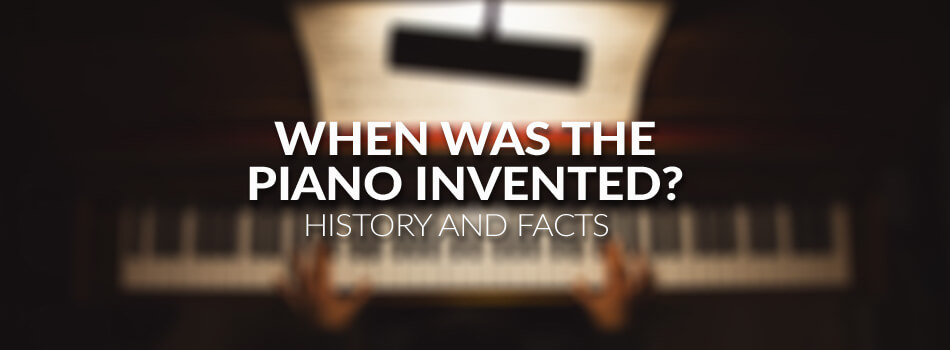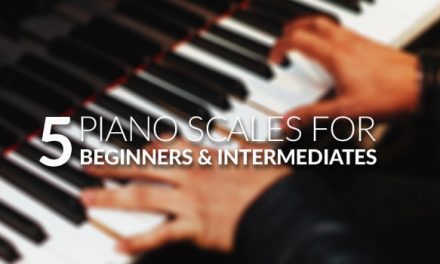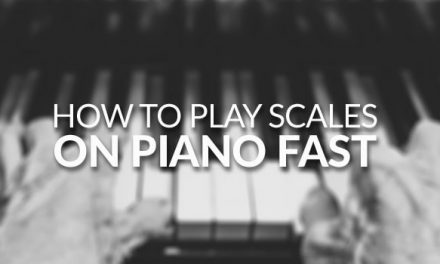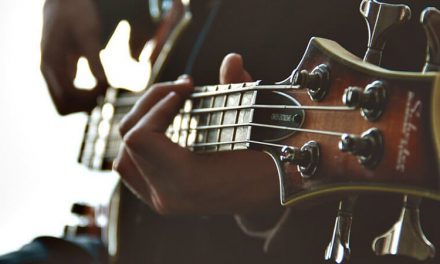When, where and by whom was one of the most important musical instruments invented?
Let’s find out!
It would be completely impossible to imagine how music would sound like if the piano and akin instruments didn’t exist. Modern keyboards and synthesizers share the same 12 keys layout as harpsichords, organs and even as accordions.
How is it possible that such a unique system can be used for so many different instruments?
Table of Contents
As with many other instruments, the modern piano is the result of many different builds undergoing evolution, but there were certain very important breakthroughs along the way.
To fully answer the question, we need to go back in time and take a look at the development of the piano.
Ancestors of the piano:
There are a few instruments that used the keyboard layout way before the invention of the piano as we know it today. Those instruments used a similar way to play the notes, but they had a very different way of producing the notes.
That means that a single note was assigned to a single key, but what happened after pressing the key was different from instrument to instrument.
Let’s take a look at the different ancestors of pianos:

1) The Hydraulic Organ
Often labeled as the oldest keyboard-type instrument, the Hydraulic Organ, also known as the water organ or hydraulos, which is the oldest organ-type instrument.

It is a pipe organ blown by air, where the power source pushing the air comes from water from a natural source (e.g. by a waterfall) or by a manual pump.
The oldest known model is the Hydraulis from the 1st century BCE.
This is the oldest organ found to date and can be seen at the Museum of Dion in Greece.
But the instrument might be even older than that! The Greek engineer Ctesibius of Alexandria is credited with inventing the organ in the 3rd century BCE.
2) The Clavichord
The clavichord is the next keyboard instrument that emerges in Europe. At the same time, this is the first stringed keyboard instrument invented. This is a popular practice instrument that was used largely in the late Medieval, through the Renaissance, Baroque and Classical eras.
Historically, it was mostly used as a practice instrument and as an aid to composition, not being loud enough for larger performances.

The most outstanding aspect of this instrument is that the clavichord produces sound by striking brass or iron strings with tangents, which are small blades made out of metal.
The vibrations of the strings are transmitted through the bridges to the soundboard. As for the time period, the clavichord was invented in the early fourteenth century. In the German language, we find references to harpsichords and clavichords as early as 1504, while in English, we have some as early as 1502.
3) The Harpsichord
The last important ancestor of the piano is the harpsichord – another stringed keyboard instrument. The size, loudness and occasional use of multiple strings tuned to unisions for each key make this instrument somewhat superior to the clavichord.
Another difference that instead of metal blades, the harpsichord uses small quill instead, which creates a different type of timber and tone.
It should be noted that “Harpsichord” is an umbrella term that covers the whole family of similar plucked-keyboard instruments. These include virginals, muselars, clavicytheriums, and spinets.

The earliest known reference to a harpsichord dates from 1397. At that time, Hermann Poll claimed to have invented an instrument called the clavicembalum. The invention of the harpsichord was probably inspired by the keyboard layout of the organ on one hand, and the zither family of instruments on the other.
One variation of the harpsichord that really stands out is the archicembalo. This unique musical instrument, described by Nicola Vicentino in 1555, was a harpsichord built with many extra keys and strings, enabling experimentation in microtonality and just intonation. All in all, the earliest complete harpsichords still preserved come from Italy, the oldest specimen being dated to 1521.
Where from now?
While the keyboard layout is certainly older than the design of the piano and while it was pretty unique and advanced on its own, it is certainly only one of the elements that make the modern day piano the unique and popular instrument that it is.
The sounds used by these instruments have certainly been an inspiration for guitarists and keyboardists to go back in time and explore the musical possibilities of the past.
A Musical Revolution – The Birth Of The Piano:

Now that you understand the complex development of keyboard instruments that preceded the piano, it is time to take a look at the main character of this text.
The first instrument that resembled a modern-day piano was invented by Bartolomeo Cristofori, around the year 1700 in Italy. It was the first acoustic, stringed musical instrument that used a hammering system that is still used today.
To be precise, a performer presses down or strikes the keys of the keyboard with the fingers and thumbs of both hands to cause the hammers to strike the strings.
The original name of the instrument from the 1700s is almost as interesting as the invention and development of the instrument itself. The word piano is a shortened form of pianoforte. The full name of the instrument was Gravicembalo col piano e forte and fortepiano. Loosely translated, it means Harpsichord that can play softly and loudly. This is the first element of the instrument that has made it extremely useful for composers.
Bartolomeo Cristofori, who was employed by Ferdinando de’ Medici, Grand Prince of Tuscany, was a masterful harpsichord maker and as such, he was hired to be the Keeper of the Instruments. While it is not exactly known when he made the first piano, it is certain that his harpsichord building skills were a great asset during the process of the invention.
The features of the 1700s piano:
To understand the impact of the piano in the 1700s, we need to look at the different features that made it stand out from other keyboard instruments of that time. At the same time, we will briefly compare it to modern day pianos and outline some of the differences.
The name is referring to the variations in volume or loudness produced by a pianist’s touch or pressure on the keys. The greater the strength and velocity of a key press, the greater the force transferred to hammer hitting the strings. As a result, the piano produces a louder the sound of the note played and the attack of the note is bigger.
From today’s perspective, the 1700s piano was quieter than modern day instruments; the total loudness was lower and thus the dynamic range and expressive abilities were lower. But at the time of invention, it was one of the loudest instruments, especially considering the size and range of notes that it could play. Another early form of the name that referred to the earliest found piano from the 1720s is un cimbalo di cipresso di piano e forte (“a keyboard of cypress with soft and loud”).
The earlier instruments had significant drawbacks.
While the harpsichord produces a sufficiently loud sound, it offers no dynamic and expressive control over each note played. On the other hand, the clavichord allows expressive control of volume and sustain, but most of the time it is too quiet for large performances, especially in big halls.
The piano offers the best of both instruments. The instrument invented by Cristofori combines the ability to play loudly and perform sharp accents. The piano can project more during piano concertos and play in larger venues, with dynamic control that permits a range of dynamics, including soft, quiet playing. Cristofori has managed to solve a tricky mechanical problem. The hammer must strike the string, but not remain in contact with it.
The reason is that this would damp the sound and stop the string from vibrating and making the sound. Imagine a guitar string – you need not to just touch it, but pluck it an let it vibrate.
Further development of early pianos:
The 1700s and 1800s pianos are still associated with Bach and Mozart. A big addition was the addition of a forerunner of the modern sustain pedal. This mechanism was added by Gottfried Silbermann, better known as an organ builder, whose pianos were direct copies of Cristofori’s instruments, but with the addition of this expressive feature.
Bach, one of the most important composers of the time and one of the most influential composers for the piano, did actually not approve of the instrument at first, mostly because of tonal characteristics of the piano at that time. For him, the instrument was still too quiet, especially in the upper register. This changed during the 1740s, after which Bach approved of the piano greatly and helped market and sell it.
The piano became especially popular during the 1800s. These instruments, which were made famous and popular by pianists like Mozart, are today referred to as Fortepianos.
The Viennese school pianos had 2 strings for each note, yet were still quieter than 21st-century pianos or English pianos. They also came with less sustain. Today, replicas of such instruments are made for authentic-instrument performances of the music of that time.
A very important example of a piano from that time is the Grand piano by Louis Bas of Villeneuve-lès-Avignon. The piano dates back to 1781 and it is the earliest French grand piano in existence.

Some of the elements that make it stand out from today’s pianos and that make it a representative of its time are the includes an inverted wrestplank and action derived from the work of Bartolomeo Cristofori and which are also present in the Viennese school pianos. Another element is the ornately decorated soundboard.
The modern-day piano:
The Industrial Revolution and the demands of musicians, performers, and composers have forced piano builders to drastically modify the existing instrument. Some of the most drastic changes are the high-quality piano wire used for strings, the addition of massive iron frames that could withstand the tremendous tension of the strings, and the increased the tonal range of the piano – from the five octaves of Mozart’s day (which is almost what a guitar can play) to the seven and above octave range found on modern pianos that cover pretty much the whole specter of usable notes.
The original and modern grand pianos resemble a fusion of early pianos and the huge cases used on harpsichords. The early grand pianos quickly gained a reputation for the splendor and powerful tone, which is the result of this hybrid design. Haydn and Beethoven used the early grand pianos that had six and a half to seven octaves.

Another difference of modern pianos is the use of a choir of three strings rather than two for all but the lowest notes. This, in combination with cross-stringing and the use of wound strings, allowed for a more dynamic and loud sound that was more balanced out than in the past.
More modern variations of the instrument are the different sizes of the past instruments (parlor grand, concert grand, baby grand), the invention of square pianos and upright pianos, as well as the invention of electric pianos, electronic pianos, and digital pianos.
CONCLUSION
The unique features of the piano have helped shape the musical landscape as we know it today. We are not sure how exactly pianos are going to develop in the future, but it is to assume that musicians and composers will push modern building technology requesting even louder pianos with an even bigger tonal range that will be on the very edge of what the human ears can perceive, but all packed together neatly in a smaller size.
Whether piano builders are going to be able to meet these demands or if the digital instruments are going to take over still remains to be seen.
If you have more questions about the history of the piano or about other instruments, don’t hesitate to ask questions in the comments below. At the same time, we invite you to take a look at some of our piano and keyboard articles.







